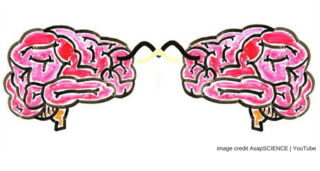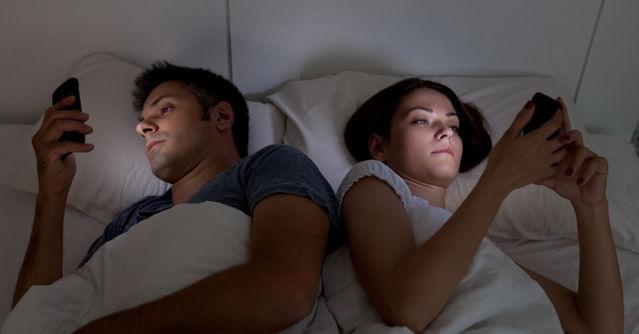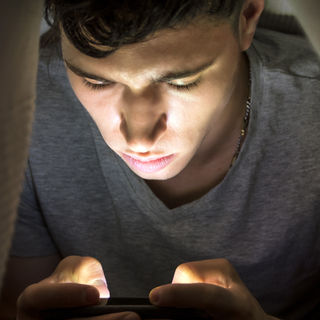Can forensic psychology shed some light on unsolved homicide cases?
Source: Google Images/Polaris
The bizarre death of six-year-old JonBenet Ramsey back in 1996 remains a major unsolved mystery today. How might
forensic psychology
possibly contribute to finally resolving this now totally "cold" case?
Let us take a careful look back at what happened on that frosty and
fateful Christmas night in the Ramsey household, attempting to more
clearly discern why little JonBenet was seemingly brutally murdered and
who might have been motivated to commit such an
evil
deed. Over the course of the next several postings, we will together
closely examine the detailed history of this case from the perspective
of forensic
criminal psychology.
Before proceeding, it must, in fairness, be explicitly stated that no
charges have ever been formally filed against the Ramseys. John, Patsy,
and Burke Ramsey have always adamantly professed their innocence and
denied any involvement in JonBenet's death. In fact, in 2008, based on
the results of the most recent "touch"
DNA testing,
the Ramsey family was publicly and officially exonerated by then
Boulder District Attorney Mary Lacy of any complicity or wrongdoing in
the death of JonBenet, based mainly on the discovery, according to Lacy,
of the DNA of an "unknown male" on key articles of JonBenet's
bedclothing. (See Lacy's official letter to John Ramsey
here.)
However, some investigators still vehemently dispute these scientific
findings as inconclusive, and deem her apologetic letter of exoneration
inappropriate and "not legally binding." And there are apparently still
no alternative suspects at this point, some 200 having already
reportedly been investigated and cleared. (There is in this regard some
similarity to another infamous case, the bloody murders of Nicole Brown
Simpson and Ron Goldman in 1989, for which O.J. Simpson was exonerated
by the criminal trial but still believed by many, including a jury in
the subsequent civil case, to be responsible. See my
prior post.)
The JonBenet Ramsey case is stone cold. Seemingly the perfect crime. So
what do we know, twenty years down the line, regarding the possible
identity and
motivation of the perpetrator(s) of this gruesome evil deed?
The first thing we want to do is to put away any assumptions,
preconceptions or biases, to approach the case by consciously assuming a
phenomenological stance, which means simply to re-examine it without presupposition, presumption or
prejudice.
Taking a deliberately naive, new, and dispassionate look at it with
fresh, unfettered eyes. This is something I always tried to do when
conducting forensic evaluations of defendants for the criminal courts
in California. It means placing what we know, or at least what we
think we
know, about a defendant or, for instance, this particular high-profile
criminal case, temporarily aside, and looking at what actually took
place in light of the currently available facts.
All we really know for certain is that an adorable little blonde
girl, who had become a local celebrity because she occasionally competed
enthusiastically in
beauty
pageants for children, was found dead in the basement of her luxurious
family home. She had apparently been sadistically tortured by the
perpetrator(s), possibly sexually assaulted, and, ultimately, killed.
The exact time of her death is not clear; nor are the causes of the
injuries from which she died, which included a massive eight-inch skull
fracture and a tightened noose around her neck causing strangulation and
asphyxiation, the official cause of death. In addition, and still not
explained, there were two small, distinct dark spots on her body that
some investigators believe to have been caused by a stun gun. The
seemingly hastily made ligature fastened tightly around her neck was
comprised of a woven white piece of cord, looking similar to a sneaker
shoelace, attached to a perhaps six-inch fragment of fashioned wood,
which, when turned or twisted, tightened the noose with which she was
strangled. JonBenet's hands were tightly bound together behind her head,
and a piece of black duct tape covered her mouth, according to her
father.
Indeed, JonBenet's cold and lifeless body, reportedly already stiff with
rigor mortis—suggesting
she had been dead for at least 4 hours or more—was reportedly
discovered by her father in the spacious home's hidden basement wine
cellar during the late morning/early afternoon of December 26th. John
Ramsey states that he immediately, upon searching the house a second
time and finding her body
lying
on the basement floor covered up by a blanket, removed the duct tape
from her mouth and tried unsuccessfully to unbind her hands before
carrying her upstairs in his arms. According to the police laboratory,
the DNA of an unknown male was found on two different articles of
JonBenet's clothing. Moreover, there was, according to news reports,
some physiological evidence discovered during the autopsy that suggested
to examiners the presence of sexual abuse: specifically, evidence of
vaginal
trauma
and having been possibly sodomized with a foreign object, though these
findings are subject to interpretation. One thing is certain and
incontrovertible: JonBenet did not die of natural causes. Whether she
was deliberately tortured and murdered or was the tragic victim of an
accidental death and subsequent cover up, as the Boulder police long
suspected, is still hotly debated. How did she die, who killed her, and
why?
Earlier that morning, prior to her body being found by John,
JonBenet's mother, Patsy, herself a former beauty queen, reported having
stumbled upon a three-page ransom note on the stairs leading down from
her second floor bedroom. The oddly worded, roughly handwritten note
makes reference to wanting precisely $118,000.00 for JonBenet's return,
lest she be "beheaded." According to police, it was written on pages
torn from Patsy"s own personal note pad, where they found physical
impressions of what they believed to be a practice note or perhaps one
that was started and stopped, and the writing—especially when compared
side-by-side to one sample done in her non-dominant left hand—reportedly
bore some resemblance to Patsy's. In addition, the garotte-like
ligature was fashioned, say the police, with a length of cord and a
piece of broken wooden paint brush handle apparently taken from Patsy's
art supplies, very close to where the body was found. Certainly, if
there was an intruder, as the Ramseys have consistently claimed, he or
she could have made use of Patsy's pad and art supplies during the night
while the family slept. But, for that matter, so could have another
family member.
According to unconfirmed sources, a neighbor reported having heard a
high-pitched scream in the vicinity of the Ramsey home around midnight
that night. Such a scream from within the Ramsey household and audible
from outside would almost certainly have woken and alerted the family.
But if JonBenet was killed some time between midnight, after allegedly
being put to bed by her
parents
on Christmas night, and the next morning by the supposed kidnapper(s),
what was the point of them taking the time and trouble to compose a
detailed ransom note and leaving it for someone to discover on the
stairs? In the rambling letter, the author(s), identifying themselves as
a "foreign faction,"
demanded ransom money and warned against notifying
authorities if the parents hoped to ever see their beloved daughter
again, concluding with the cryptic signature:
VICTORY! SBTC
The strange ransom note and signature, as well as some other aspects
of the Ramsey case, are reminiscent of another sensational kidnapping
case occurring in 1932, in which the 18-month-old son of celebrated
cross-Atlantic flyer Charles Lindbergh was abducted from the home during
the night. A poorly handwritten and very cryptically signed ransom note
was left for the family. (See the details of this infamous case here.)
The ransom money was delivered as demanded, but the baby was never seen
alive again. His battered body was discovered in a wooded area of a
nearby town two months later, having suffered from a massive skull
fracture. Subsequent to an extensive investigation, a suspect, Richard
Hauptman, was arrested, prosecuted, convicted of the heinous crime, and
eventually executed, though he always proclaimed his innocence. Some
continue to speculate on who truly committed this kidnapping and killing
to this day.
Did the original plan of kidnapping JonBenet, the daughter of a
wealthy businessman, for ransom money go awry for some reason, resulting
in her murder instead? Could the alleged kidnapper(s), who said they
would call the Ramseys by 10:00 AM that morning after Christmas but
never did, have somehow believed that her body would not be found there
in the basement? Or was there never any serious intention of extorting
ransom money from the Ramseys at all? Could the unusually long ransom
note have been merely another means of cruelly tormenting and torturing
them as JonBenet had been cruelly tortured? Was this evil deed the work
of a sadistic psychopathic
pedophile?
Was the motivation merely to inflict the greatest possible pain and
suffering upon the Ramsey family? And, if so, why the Ramseys? Or was
the note deliberately designed to deflect suspicion away from the actual
perpetrator?
This single concrete piece of evidence, the ransom note, seems
absolutely key to solving the case. But it is so enigmatic. Was it, as
Boulder police long suspected, penned by Patsy Ramsey herself? If so,
why? And if not, who did write and leave it to be found? Probably not
nine-year-old Burke, though that possibility cannot necessarily be ruled
out in my opinion. (Whether Burke was ever considered by investigators
as being the possible author is not clear to me.) And certainly not
JonBenet herself. Nor, according to police investigators, was John
Ramsey the likely author. (Was it dusted for fingerprints?) Whether the
contents and style of this letter have previously been subjected to
psychological analysis is not known to me, but it would seem to
potentially provide a wealth of information about the psychology of its
author(s), something we will seriously consider in Part 2 of this
series.
If we rule out the family members as writing the rambling ransom
note, which has officially already occurred in effect by dint of their
formal and controversial exoneration, it becomes clear that if John,
Patsy, or Burke did not create the note, someone else (or possibly more
than one person) was inside the home that night, opportunistically
lurking in the darkness, and responsible for both the ransom note and
the grotesque killing of JonBenet. Someone sufficiently cruel, hateful,
violent and sadistic to have committed such an atrocious crime. Someone
powerfully motivated to brazenly take the risk of doing so and of
possibly being caught. Which begs the following questions: What type of
person would most likely perpetrate such a crime? Were they motivated by
money? Sex?
Rage?
Jealousy?
Or resentment toward the very affluent and influential Ramsey family?
Or animosity toward JonBenet in particular? Did John or Patsy Ramsey
have enemies? If someone wanted to hurt John and Patsy, this would
surely be one extreme way to do so. If JonBenet Ramsey was deliberately
and brutally murdered by an intruder(s), the perpetrator(s) must have
been driven or compelled to commit this evil deed by something very
powerful indeed. Could the killing have happened, counter to the
original plan, due to
fear
of being discovered when JonBenet cried out around midnight? Though the
Boulder police department reportedly investigated and cleared hundreds
of potential suspects in this case, either the perpetrator was somehow
mistakenly eliminated as a suspect by investigators or never identified
and investigated at all.
Or, could the killer's true intention all along have been simply to
permanently silence the child, a motive perhaps symbolized and suggested
by the duct tape allegedly found over her mouth by her father, John,
whom some speculated may have been sexually abusing his daughter,
conjecture both he and JonBenet's pediatrician dismiss unequivocally.
Could JonBenet, these theorists wondered, have been killed to keep this
sordid secret from ever being exposed? Curiously, this evidentiary
detail of the case is eerily reminiscent of the duct tape found on the
badly decomposed corpse of Casey Anthony's 4-year-old daughter, Caylee.
According to her prosecutors during the trial, Casey Anthony (now found
not
guilty,
but still believed responsible by some for Caylee's death) presumably
killed her daughter partly because she wanted to be free to live a
different, freer lifestyle or possibly covered up her accidental death.
Casey told investigators that her daughter had been kidnapped by a
mysterious nanny who evidently never existed. (See my
prior posts.)
In the case of Susan Smith (now convicted), the then
twenty-three-year-old mother drowned her two young children (both about
JonBenet and Caylee's same age) by driving her car into a lake with the
children restrained by their seat belts from escaping, presumably so
that she could be with her new boyfriend. Prior to eventually
confessing, Smith blamed the murders on a phantom carjacker. Smith had
reportedly been severely emotionally damaged during childhood, sexually abused, was suicidally depressed, and may have suffered from some sort of personality disorder. Extremely immature, narcissistic individuals (see my
prior post)
can have great difficulty placing their own selfish needs secondary to
those of their children. Yet another murderous mother, Andrea Yates (now
found not guilty by reason of insanity and diagnosed as suffering from
postpartum
depression
and psychosis), drowned her five children one-by-one in a bathtub,
claiming she did this evil deed to keep them from being damned and
tormented by Satan as she felt she had been. (See my prior post.)
Statistically speaking, the likeliest culprits when a child dies in
the home would be one or both parents, which is the main reason why the
authorities focused so intensively on the Ramseys from day one.
Filicide—defined as the killing of a child by his or her parent
—is
a deeply disturbing but very real phenomenon. According to Department
of Justice statistics, between 1976 and 1997, which includes the year of
JonBenet's death, nearly 11,000 children like her were killed by their
parents or step-parents. The motives for filicide vary, from so-called "altruistic" filicide or supposedly well-intentioned mercy-killing of sick and suffering offspring, to "accidental" filicide during severe child abuse
or neglect, to angry retribution against an offending spouse as in the
ancient Greek tragedy Medea, to the overwhelmed or self-serving solution
of killing unwanted, demanding, cumbersome, socially
inconvenient children, to the murderous acting out of the paranoid
delusions and command hallucinations of madness.
Could someone like Patsy Ramsey, who succumbed to ovarian cancer in
2006, have, as some still insist, intentionally or unintentionally
killed her daughter? Perhaps. But, as in other infamous cases of
filicide, there would need to have been some overwhelmingly compelling
motivation or compulsion to do so in order to overcome the innate
maternal instinct to protect and defend her offspring from any and all
harm. From all reports, Patsy was a very loving, caring and devoted
mother to JonBenet. What could possibly drive a loving mother like this
to commit such a reprehensible crime? Police hypothesized early on that
she may have that night flown into a fit of rage regarding JonBenet's
chronic bedwetting, fatally injuring her daughter accidentally, and
then, in a total
panic,
desperately covering it up by concocting the far-fetched kidnapping
story, composing the ransom note, and staging the gruesome murder.
Presumably, this would have had to happen with her husband's knowledge
and full complicity, motivated perhaps by his strong desire to protect
his wife, their
marriage,
and their reputation. (Though it may hypothetically be possible for
this all to have taken place during the night when both John and Burke
were deeply asleep and unaware, that scenario seems rather improbable.)
The most likely explanation for deliberate infanticide or filicide
being committed by a mother like Patsy Ramsey, in my view, would be the
presence of severe
postpartum depression, but there is no publicly known
psychiatric
history of this (or at least none known to me). Nor is there any
information suggesting the presence of profound depression after
JonBenet's brother, Burke, was born nine years prior. And it had been
six years since she gave birth to JonBenet, which, if she had been
suffering from prolonged depression and possible psychosis, it would
likely have been diagnosed and treated at some point. Whether either
Patsy or John have any previous history of mental health
treatment whatsoever is not known to me. However, there apparently were
several psychiatric interviews of Patsy Ramsey subsequent to JonBenet's
death which, according to then District Attorney Mary Lacy, revealed no
signs of psychopathy,
pathological jealousy or envy of her daughter, or violent tendencies in
general. Absent any prior psychiatric history of psychopathy, major
depressive disorder, postpartum depression, psychosis or any other
significant mental disorder, other possible diagnoses I would, as a
forensic psychologist, want to rule out in evaluating a defendant in
such a case would include substance intoxication, acute psychotic or
manic episode, borderline personality disorder, severe obsessive compulsive disorder, and dissociative identity disorder (formerly called multiple personality disorder), in which one repressed shadowy part of the personality
temporarily takes over, not unlike what tragically occurs in Robert
Louis Stevenson's famous fictional tale of Dr. Jekyll and Mr. Hyde (see
my prior posts).
Despite having been officially eliminated (but not legally tried and
acquitted) as a suspect, since the early days and as recently as last
year, in a CBS documentary on the JonBenet Ramsey case, there are those,
including famed forensic pathologist Werner Spitz, who hypothesize,
despite his being long ago officially ruled out as a suspect, that
Burke, now 29, killed his sister. There are unconfirmed reports, for
example, of a "family friend," who claims that Burke as a boy had a
terrible temper, and physically struck his sister, JonBenet, in the head
with a golf club about eighteen months prior to her death. Promoters of
this theory believe that Burke may have been jealous of JonBenet,
perhaps suffering from
sibling
rivalry, that he became enraged with her that night for some minor
reason, and either intentionally or accidentally killed her. Appalled,
horrified, in shock and terrified of losing Burke too, the Ramseys,
these individuals suggest, deliberately and hastily created an elaborate
(and effective) cover up to protect Burke from suspicion and
prosecution. This theory requires that we accept two premises: first,
that Burke was capable of committing the killing; and second, that his
parents could have concocted the ransom note, and, as part of their
story, further hideously mutilated and defiled their own daughter's now
dead body in order to save their son from prosecution for homicide. And
that they did all this on the spur of the moment, without hesitation or
time for planning, while
grieving the shattering loss of their daughter.
Regarding the second premise, I find it strains credulity that these
two parents would react in such a spontaneous, calculating, coordinated
and criminal fashion. Could a nine-year-old boy hypothetically commit a
vicious evil deed like this? To paraphrase Sigmund
Freud,
the innocence of children is due largely to weakness of limb. Children,
from infancy on, are subject to passionate feelings not only of
sexuality,
but of jealousy, rage, resentment, and murderous impulses toward
siblings, and even parents. And children often have difficulty
controlling these emotions, sometimes leading to a destructive acting
out of these violent impulses. A child with psychopathic proclivities,
one who might be diagnosed as manifesting symptoms of Conduct Disorder,
for instance, would, I believe, be capable of committing a crime such
as this—including the crushing blow to the head, the possible use of a
stun gun (was a such a stun gun ever found in the home?),
the slow and
torturous strangulation by garrote, and the obscene sexual violation.
Indeed, by definition, according to the American Psychiatric
Association, the diagnosis of Antisocial Personality Disorder (see my prior post)
in adults requires a history of Conduct Disorder starting prior to the
age of 15, and the presence of a "pervasive pattern of disregard for,
and violation of, the rights of others that begins in childhood or early
adolescence."
These antisocial behaviors commonly include "aggressive conduct that
causes or threatens physical harm to other people or animals." This
cruelty can take the form of torturing insects or animals for pleasure.
Such children or adolescents "often initiate aggressive behavior and
react aggressively to others. They may display bullying,
threatening, or intimidating behavior, start fights, exhibit physical
cruelty, and use potentially deadly weapons (e.g., a bat, brick, broken
bottle, knife, or gun)." But that degree of aberration in a boy of nine
would, fortunately for us all, be relatively rare, though studies
suggest that the incidence of Conduct Disorder is on the rise, occurring
in anywhere from 1-10 percent of the general population, mainly in
males. (See my prior post.)
And there would likely be some significant history of serious
behavioral problems at both school and home, prior and subsequent to the
crime. Whether this can be said of Burke is questionable based on the
available information. Much less unusual would be a scenario in which
one sibling becomes enraged with the other over some seemingly trivial
event, suddenly lashing out angrily and violently (though not
necessarily murderously): for example, impulsively striking the victim
forcefully over the head with some handy heavy object, occasionally
resulting in his or her serious injury or death.
In addition to the controversial DNA evidence, currently there are at
least two seemingly significant clues that seem to lend support to the
intruder theory. The suitcase that was found sitting below the unlocked
and open basement window in the room where JonBenet's body was
discovered was said to not belong there by John Ramsey. Its position
suggests the possibility that it was purposely placed below the window
and used to step up on in order to exit the room through the window.
And, according to ex-Boulder DA Mary Lacy, who has officially ruled out
any member of the Ramsey family as suspects and was taken through the
home a few days after JonBenet's body was found, there was an obvious
and unmistakable impression in the carpet outside of JonBenet's bedroom,
a so-called "butt print," which she concludes was left by the intruder:
"Whoever did this sat outside of her room and waited until everyone was
asleep to kill her." Who could that have been? Or might that impression
in the carpeting have a more innocent explanation?
I have tried here in Part 1 of this series of posts to succinctly and
accurately gather and summarize some of the publicly known facts to
date gleaned from a review of various media and news sources, as well as
prior and current speculative theories about this case, to provide
readers who may be unfamiliar with it an overview for further
exploration and discussion. There are numerous other theories and
details not noted here, some of which will be explored later. Clearly,
there are still, twenty years since the crime was committed, more
questions than answers, some of which we will be further examining. Let
me know your own thoughts, theories, speculations and responses to mine
regarding this tragic and very mysterious unsolved case in your comments
and questions. I will do my best to include, consider, and address them
in Part 2.












-
Psychosis, Susceptibility and Early Intervention
-
Feeling Good With CBT
-
OCD: The Serious Issue of a Ridiculed Illness
-
Childhood Mental Health and Raising Confident Kids
-
Schizophrenia: A Journey Inside the Shattered Mind
-
Social Anxiety Disorder: The Illness of Missed Opportunities
-
The Fear of Fear: Panic Disorder and Agoraphobia,
-
Why Procrastination Makes You Depressed (and Depression Makes You Procrastinate)
We had a good chat. However, the irony of discussing depression and procrastination at a time when I was quite depressed wasn't lost on me. Perhaps it was the perfect time to discuss the topic.and most recently
Today, when Danny emailed from "across the pond" as they say to tell me that the podcast was up and that it had already attracted a lot of interest in his local support group, we got into a brief exchange where he recommended a "must read" book.
He offered the suggested read when I told him that I haven't been writing. He assumed I was blocked, I guess, but that wasn't the case. I hadn't stopped writing because I couldn't write, I just chose to give myself some time off while I dealt with the death of my father. The depression was to be expected, and some self-compassion was necessary.
In any case, Danny made a perfect suggestion, I think, as I've read the book before, but I sure needed to think through it again. And, to his credit, both his podcast and listening to the book again as an Audible "read" while driving to the university has prompted me to write. Win-Win.
Ok, I said this would be a brief post, so the book is by Steven Pressfield the renowned author. It's not social science, and he even discusses how writing a nonfiction "advice-type book" like this initially fueled his resistance to write at all. Resistance is his focus, and it's really a good read. For those of us who procrastinate and for whom procrastination undermines creativity (read: All of us!), you will cringe as you read and you will learn important things.
I don't agree with everything Pressfield has to say, but that doesn't matter. I even recommend you fuel your own procrastination today by becoming acquainted with Danny's My Own Worst Enemy podcast and Pressfield's wonderful book The War of Art. It might be one of the few times that procrastination will pay off.